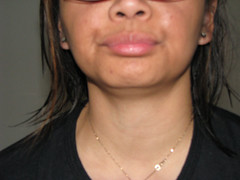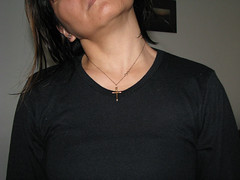Doing regular neck and face stretching exercises improves musician health, leading to increased flexibility, dexterity, coordination and blood circulation. Musicians are prone to injuries stemming from tension, poor posture, improper technique, repetitive strain and overuse. All musicians use their facial and neck muscles extensively, making them susceptible to Temporomandibular Joint (TMJ) Dysfunction and Thoracic Outlet Syndrome. These injuries can be prevented by incorporating stretching exercises for musicians into their daily routine.
How Musicians Should Stretch the Face and Neck Muscles
Musicians should stretch prior to practicing or performing. They should be done after the muscles have had a chance to warm up. For example, stretches can be done in the shower, after a shower or after doing some light exercises.
Musicians should take breaks during practice sessions to stretch. After drilling a “trouble spot” numerous times, it is advisable to do some stretches before tackling a new section or piece. Stretching backstage between performances is also beneficial.
Follow these seven exercises and refer to the photos below:

1 Big Mouth Stretch
Purpose: Loosen up the jaw muscles, increase blood circulation and help prevent TMJ Dysfunction.
Performance:
Begin with your head level and facing forward.
Sit in a comfortable position.
Breathe in, raise your eyebrows and open your mouth wide as wide as possible.
Close your mouth after exhaling while keeping your jaw centered.
Hold stretch for 5 – 10 seconds. Repeat up to 10 times.

2 The Squinch
Purpose: Increase blood flow and relax the muscles in the face and jaw.
Performance:
Begin with your head level and facing forward.
Sit in a relaxed position.
Exhale and “squinch” or “scrunch” your entire face.
Hold this position for three seconds then relax.
Repeat.

3 Isometric Jaw Exercise
Purpose: To relax the jaw muscles.
Performance:
Begin with your head level and facing forward.
Make a fist and place it directly underneath your chin.
As you slowly open your jaw, provide some resistance by gently pushing your fist upwards.
Hold this position for 10 seconds.
Release.
Repeat 10 times.
4 Lip Flutters

Purpose: Strengthen vocal folds and relax facial muscles.
Performance:
Keep your teeth slightly open, lips a little bit forward and face soft.
Take a low breath from the diaphragm.
Pretend to blow a bubble and allow the air in your lungs to make your lips vibrate.
Try to sustain the sound for as long as possible, until you run out of air.
Don’t pucker your lips.
Gently place your fingers on either side of your mouth if you are having trouble.
Repeat several times, trying the following variations: lip flutters without sound, staccato lip spurts without sound, lip flutters with sound (try to imitate a small motor purring), pitched lip flutters (flutter your lips while vocalizing a scale or a song).

5 Side Neck Stretch
Purpose: Relaxes your neck and shoulder muscles.
Performance:
Begin with your head level and facing forward.
Slowly tilt your head towards the right ear to stretch the left side.
Hold the stretch between 10 – 20 seconds.
Repeat, stretching the right side.
Stretch both sides at least two more times.
6 Front to Back Neck Stretch
Purpose: Relieves tension in your head, neck, back, hips and shoulders.
Performance:
Begin with your head level and facing forward.
Imagine that there is a small ball tucked under your chin.
Gently tilt your head downward, being mindful of your imaginary ball.
Hold this stretch for 5 – 10 seconds.
Repeat up to five times.
7 Side to Chin Neck Stretch
Purpose: Provides pain relief in your head, neck, back, hips and shoulders.
Performance:
Begin with your head level and facing forward.
Slowly tilt your head towards the right ear to stretch the left side.
Gently turn your chin downward towards your shoulder.
Hold the stretch between 10 – 20 seconds.
Repeat, stretching the right side.
Stretch both sides at least two more times.
Strive for a gentle stretch. Never stretch to the point of feeling pain. If your jaw makes any clicking or popping sounds when you open and close your jaw, consult a dentist before trying these exercises. Seek professional help from a doctor, physiotherapist or chiropractor if you need further guidance.
Dedicating as little as five minutes a day to stretching will ease tension, relieve jaw pain, ease neck pain and increase flexibility in musicians. If done regularly with proper technique, musicians can enjoy many years of pain-free and injury-free music-making.
Related Articles
Understanding Musician Injuries | Arm and Hand Stretches | Back and Shoulder Stretches
The Art of Practicing | Musician's Yoga: A Guide to Practice, Performance, and Inspiration | | Playing (Less) Hurt: An Injury Prevention Guide for Musicians

